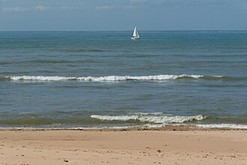Covering 86 square kilometers, Île de Ré offers an astonishingly varied landscape shaped by both nature and centuries of human tradition. Set just off the Charente coastline and connected to the mainland by a graceful three-kilometre bridge, it stands as France’s fourth largest island after Corsica, Oléron and Belle-Île-en-Mer. Its privileged position along the Atlantic coast blesses it with a mild, sun-drenched climate, boasting over 2,100 hours of sunshine per year — a luminosity reminiscent of the Mediterranean.
The island reveals a mosaic of contrasting scenery: golden sandy beaches, shimmering salt marshes, fragrant maritime pine forests, carefully tended vineyards, and picture-perfect villages with whitewashed walls and green shutters. Stretching for nearly 100 kilometres, the coastline alone offers 50 kilometres of beaches — some sheltered by dunes and natural coastal barriers, others wild and open to the Atlantic’s rolling waves.
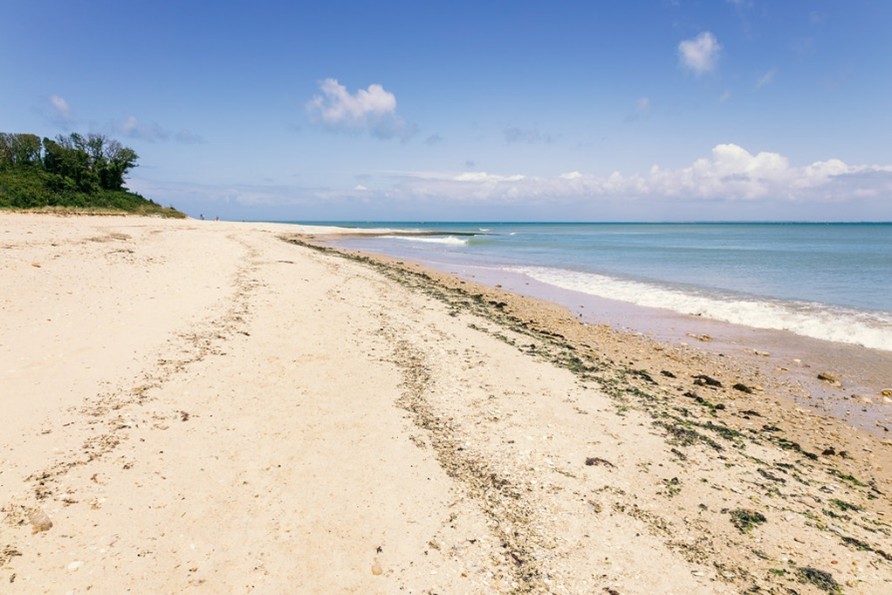
Among the island’s most beloved beaches:
- Les Grenettes and Montamer in Sainte-Marie-de-Ré, favourites for both surfing and sun-soaked afternoons.
- Arnérault Beach in La Flotte, a family-friendly haven with gentle waters.
- La Cible in Saint-Martin-de-Ré, prized for its laid-back vibe and beach huts.
- Gros Jonc and La Gollandière in Le Bois-Plage, wide sandy stretches perfect for seaside lounging.
- La Pergola in La Couarde-sur-Mer, famous for its summer surf and sunset beach parties.
- And at the island’s northern tip, Petit Bec, Lizay, and Trousse-Chemise, where the dunes and pine forests seem to melt into the sand.
Special mention must go to La Conche des Baleines, Île de Ré’s largest and arguably most beautiful beach. Backed by an expansive state-owned forest and watched over by the striking 57-metre-high Phare des Baleines lighthouse, this beach is steeped in maritime lore. From the top of the lighthouse, sweeping panoramic views reveal the gentle curve of the island, with Île d’Oléron visible to the south and Île d’Aix on the distant horizon on clear days.
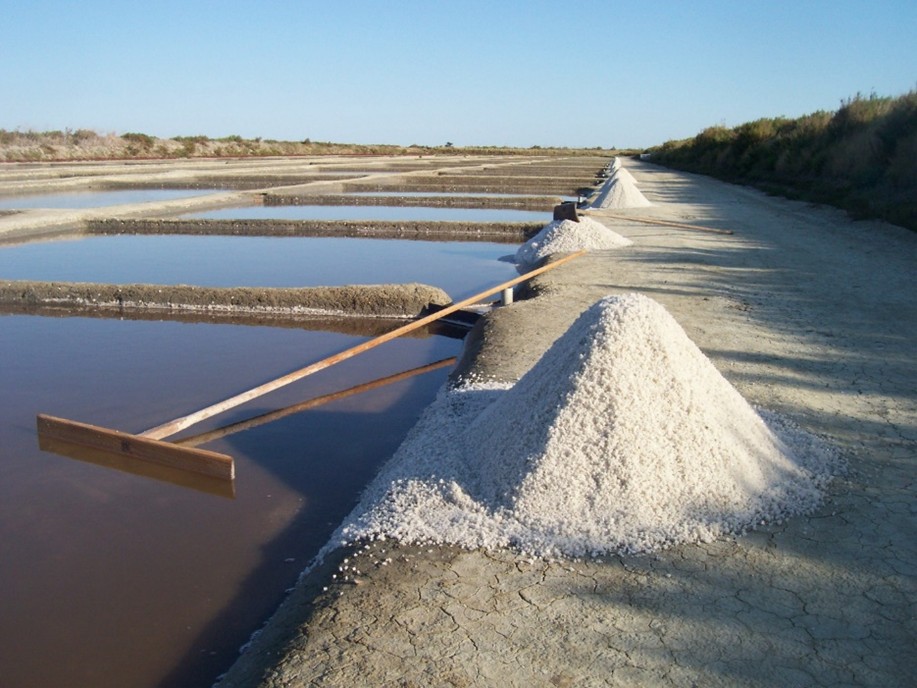
Beyond its beaches, Île de Ré owes much of its natural beauty and ecological wealth to the remarkable diversity of its ecosystems. Protected dunes, Natura 2000-listed wetlands, nature reserves, and centuries-old salt marshes form a patchwork of preserved environments where migratory birds, fish, shellfish and typical Atlantic coastal flora flourish.
A visit to Loix — a picturesque peninsula within the island, nestled in the heart of the salt marshes — offers a fascinating glimpse into this delicate world. The Écomusée du Marais Salant invites guests to discover the ancestral techniques of the island’s salt workers and learn about the vital role this precious ‘white gold’ once played in the region’s economy. Today, the marshes are also a renowned birdwatching sanctuary, home to graceful egrets, herons, and delicate black-winged stilts.
As for the landscape, the island is strikingly flat — its highest point barely reaching 19 metres at Le Bois-Plage-en-Ré — making it a veritable paradise for cyclists. Nearly 140 kilometres of well-maintained cycle paths wind their way through vineyards, salt marshes, forests and seaside villages, offering visitors an effortless and idyllic way to discover the island’s many treasures at their own pace.
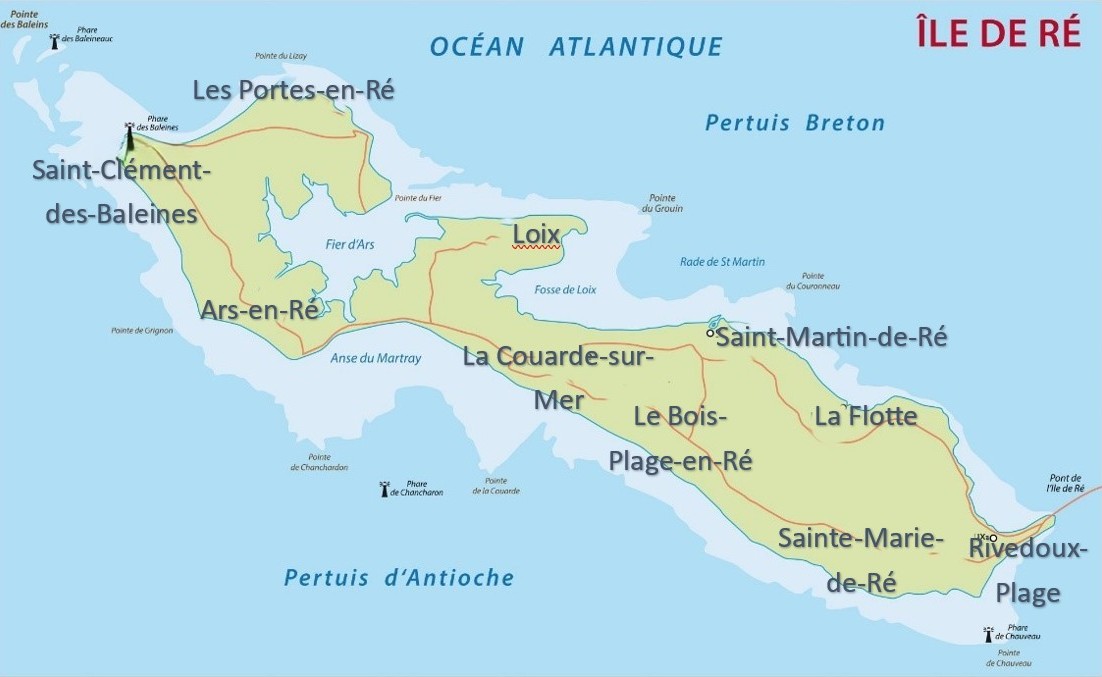
Île de Ré is home to ten charming, human-scale villages where the island’s distinctive identity comes to life through preserved architecture, flower-lined lanes, bustling local markets, and a peaceful atmosphere shaped by the Atlantic’s salty breezes. Each village has its own character, atmosphere, and secrets to discover.
- Rivedoux-Plage
Located at the gateway to the island, this is the first village you’ll encounter after crossing the 3-kilometre bridge linking La Rochelle to Île de Ré. Rivedoux immediately charms visitors with its privileged location, offering panoramic views over the Breton Channel and the La Rochelle coastline. It’s also a haven for water sports enthusiasts — kitesurfing, windsurfing, and paddleboarding are particularly popular here, thanks to favourable conditions and a vast, sheltered bay. A must-see is the Chauveau Lighthouse, standing proudly offshore and accessible only at low tide, a reminder of the island’s rich maritime heritage. Though small, the village boasts a lovely market, a pleasant waterfront promenade, and two beaches — one facing the island and the other overlooking the mainland.
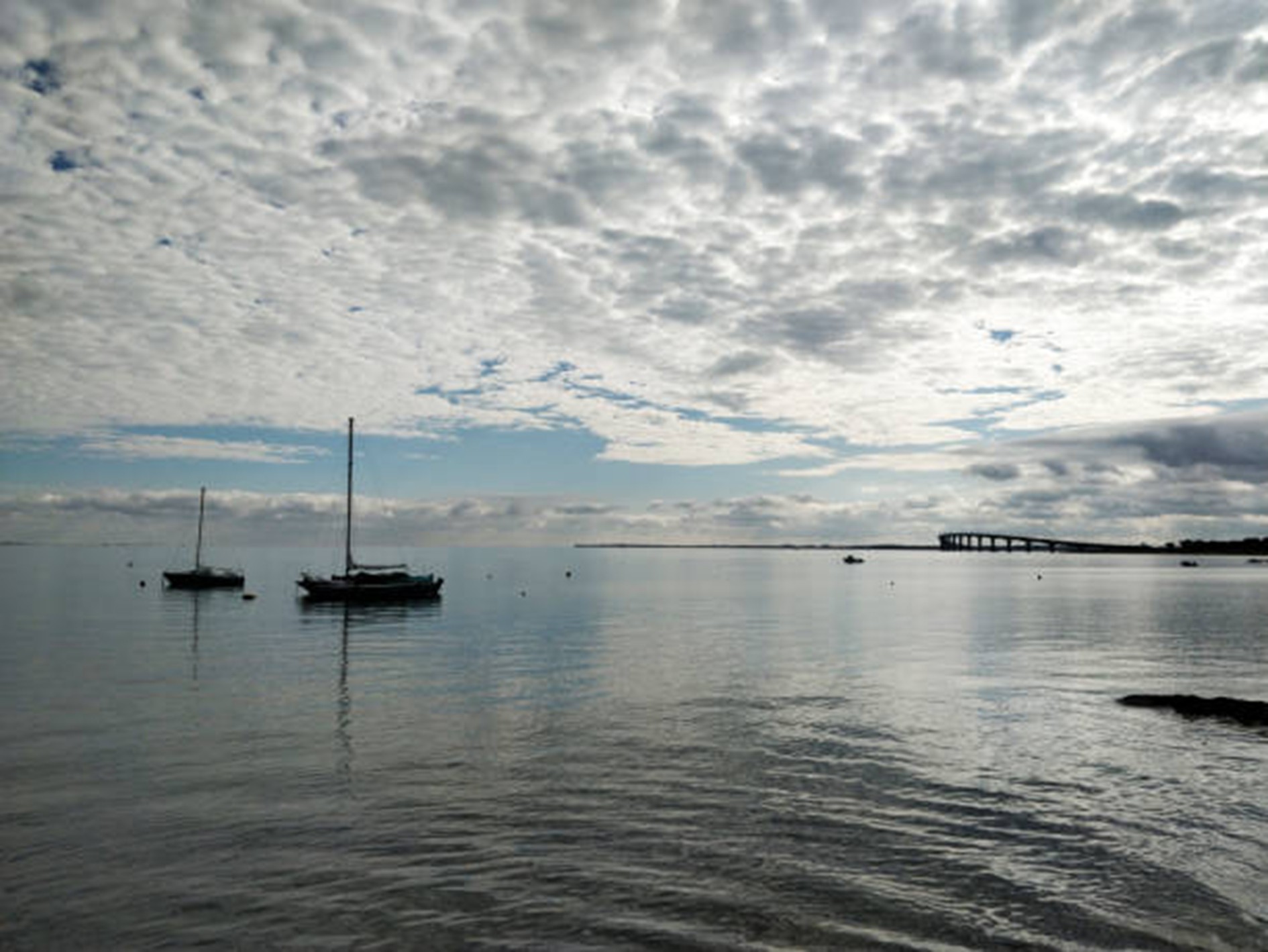
- Sainte-Marie-de-Ré
The island’s oldest and most populated village is also one of its most authentic. Founded in the Middle Ages, Sainte-Marie has preserved its winegrowing tradition and landscapes of vineyards stretching between the ocean and pine forests. The village is made up of several hamlets, including La Noue, renowned for its lively markets and its charming Antioche square, lined with terraces and traditional eateries. The narrow lanes are adorned with hollyhocks climbing along whitewashed facades. At the heart of the village stands its remarkable church, featuring a striking black and white Gothic bell tower that once served as a landmark for sailors. For beach lovers, Montamer and Les Grenettes are perfect spots for swimming and surfing.
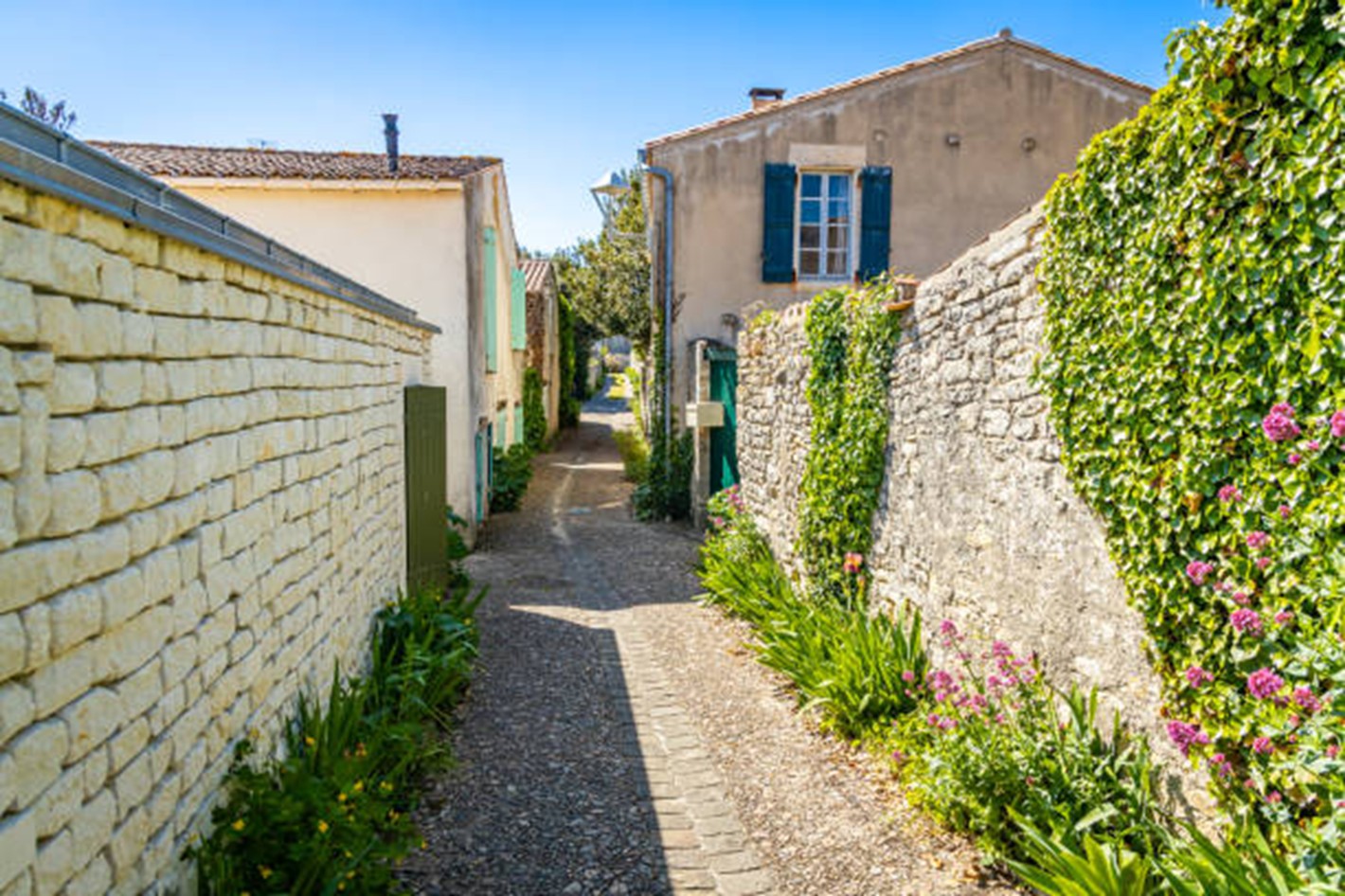
- La Flotte-en-Ré
This picturesque fishing village has preserved much of its medieval character. Its market — officially listed as a "market of character" — is held in a traditional stone hall with typical Rétais architecture, and transforms into a lively night market during summer, extending gourmet pleasures late into the evening. The charming harbour, shaped like a basin, is lined with café terraces, ideal for a break overlooking the sailboats. You’ll love strolling the cobbled streets, past green-shuttered houses, and visiting the 12th-century Cistercian Abbaye des Châteliers, a remarkable site offering stunning sunset views. La Flotte is proudly labelled both "One of the Most Beautiful Villages of France" and "Village of Stone and Water."
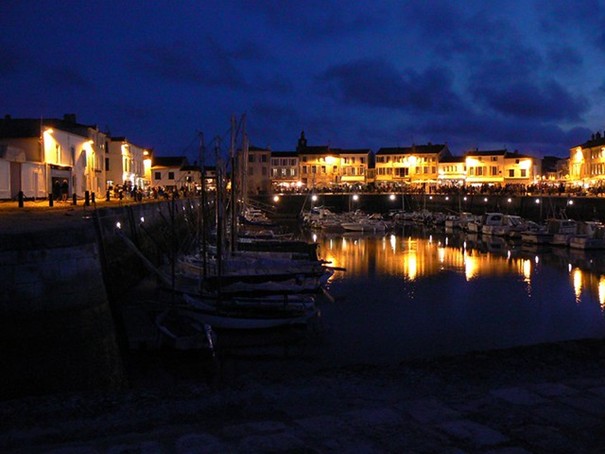
- Saint-Martin-de-Ré
The island’s historic capital, Saint-Martin, is famous for its impressive fortifications designed by Vauban in the 17th century, now a UNESCO World Heritage site. Highlights include the still-functioning citadel and the ramparts, which offer panoramic views over the harbour and the ocean. Life here revolves around the lively port, lined with popular restaurants and renowned ice cream parlours (with a special mention for La Martinière, an island institution). Paved alleyways, pastel-shuttered homes, and stylish boutiques create a relaxed, elegant atmosphere that appeals to families and history lovers alike. At sunset, the ramparts become one of the best spots on the island to take in the views.
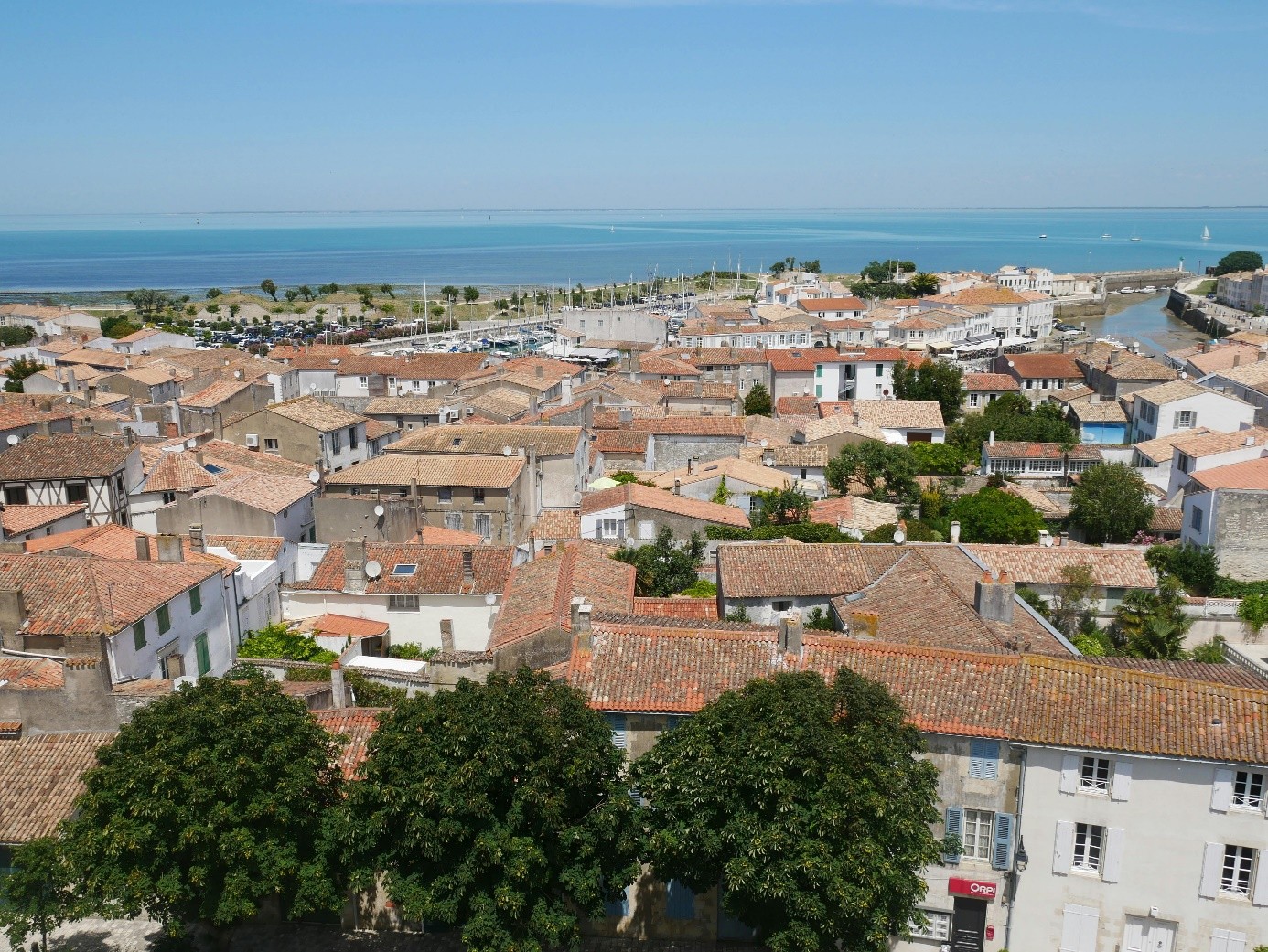
- Le Bois-Plage-en-Ré
One of the island’s liveliest villages in summer, Le Bois-Plage is famed for its long, accessible beaches — including Gros Jonc and La Gollandière — perfect for swimming, paddleboarding, beach volleyball, or flying kites in a family-friendly setting. Its daily market is one of the island’s largest and most popular, extending into night markets on some evenings, complete with live music and oyster tastings. A network of cycling paths makes it easy to reach neighbouring villages and explore the wild coast.
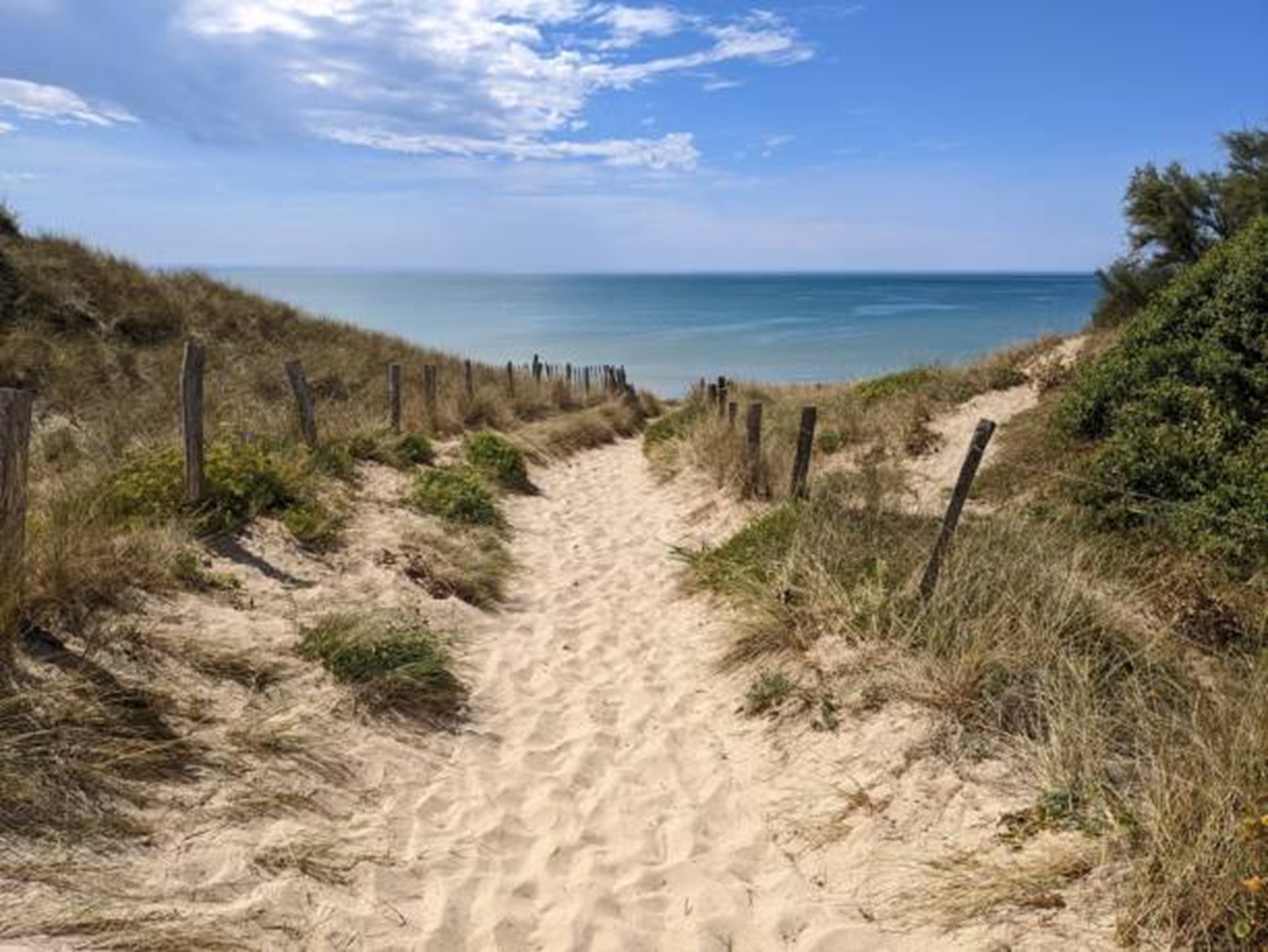
- La Couarde-sur-Mer
Nestled along the coast, La Couarde is one of the island’s oldest seaside resorts and a favourite for families and beachgoers. Its long sandy beaches stretch as far as the eye can see and are perfect for swimming and water sports. The lively central square and covered market add to the village’s charm, while winding streets and typical Rétais houses create a tranquil, timeless atmosphere. Well-connected by bike paths, La Couarde is an ideal base for discovering the island’s western side.
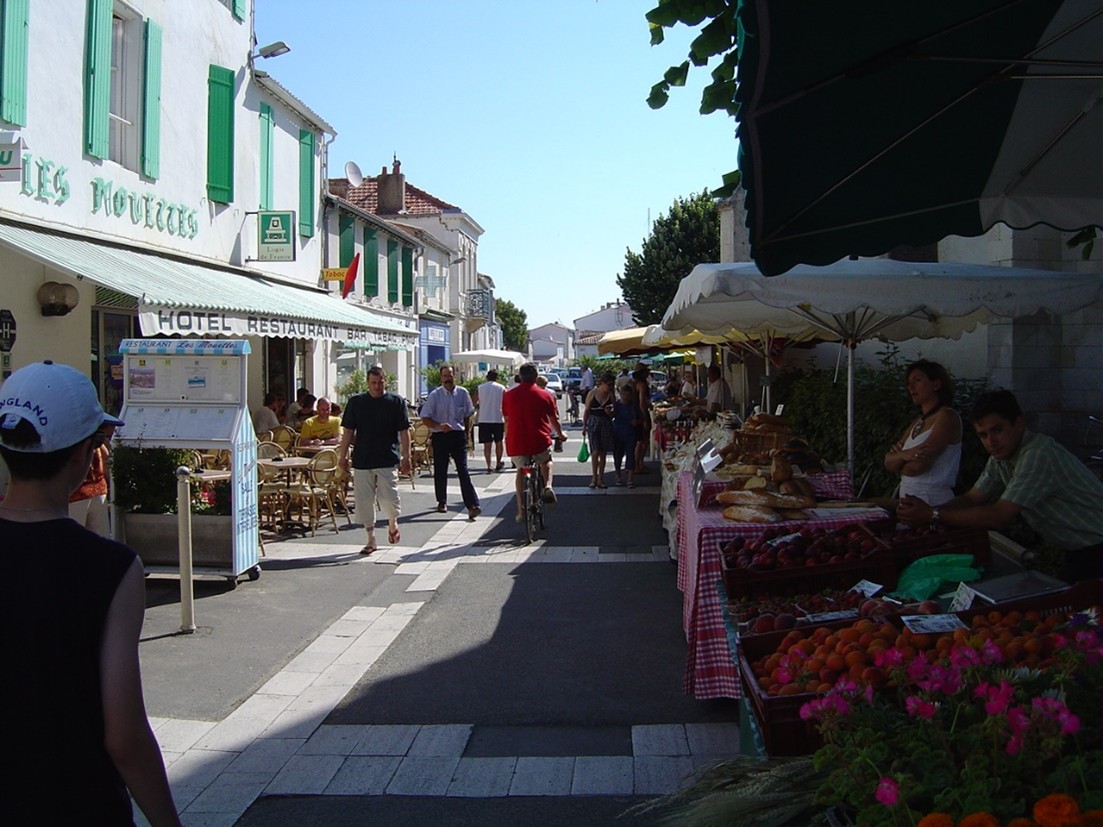
- Loix-en-Ré
A unique peninsula within the island, Loix is accessible via a narrow road bordered by salt marshes. This peaceful, authentic village enchants visitors with its flower-lined streets and tiny harbour. It’s also a hub for local artisans — from traditional soap-makers and biscuiteries to an ecomuseum dedicated to the salt marshes, offering insights into centuries-old traditions. Its covered market and serene ambience make it a perfect stop for those seeking calm and authenticity.
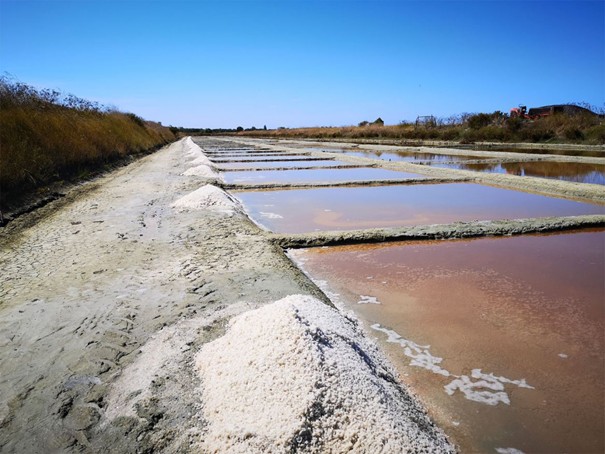
- Ars-en-Ré
Listed among "The Most Beautiful Villages of France," Ars-en-Ré is instantly recognisable by its black and white bell tower rising above the surrounding salt marshes. Historically, this steeple served as a vital landmark for sailors navigating the Antioche strait. The village seduces with its charming alleys, colourful market, and picturesque harbour, where boats dock at high tide. The surrounding marshes shift with the seasons, offering stunning cycling routes — particularly at sunset.
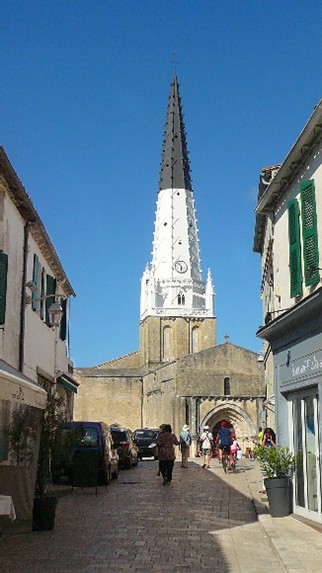
- Saint-Clément-des-Baleines
At the island’s westernmost tip, this village is dominated by the iconic Phare des Baleines lighthouse, standing 57 metres high and offering breathtaking views of the Atlantic and the Vendée coast on clear days. The area takes its name from the whales that once regularly washed ashore here. A paradise for nature lovers and those in search of wide open spaces, Saint-Clément invites visitors to climb the lighthouse’s 257 steps, visit its museum, and walk along La Conche des Baleines, the island’s longest beach.
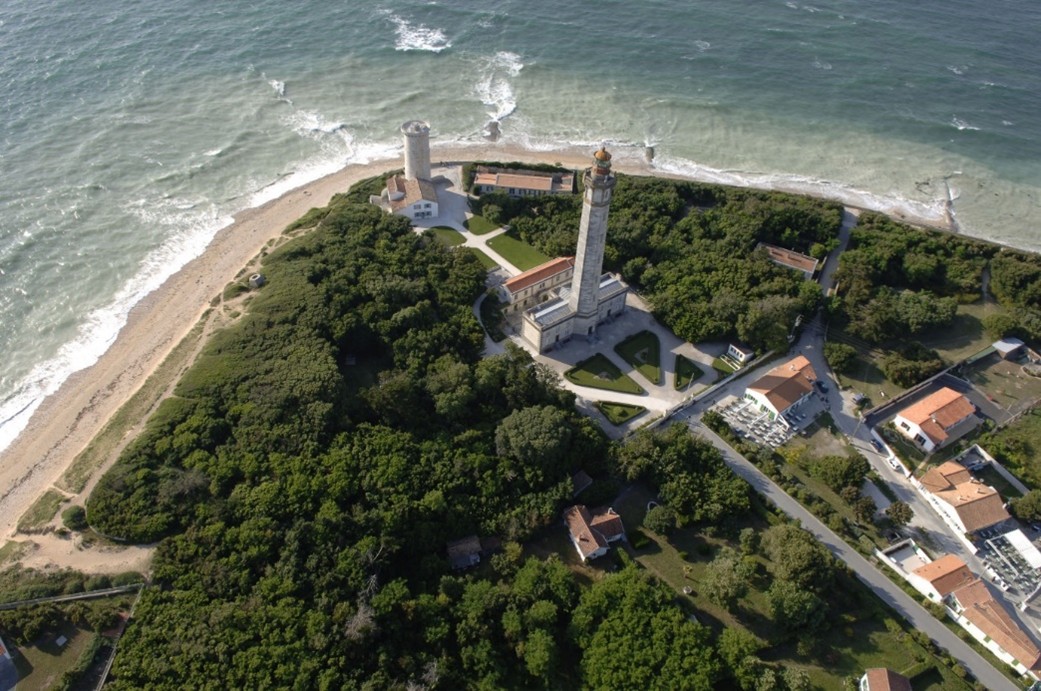
- Les Portes-en-Ré
Nestled at the island’s northern tip, this discreetly elegant village attracts those seeking tranquillity and unspoiled natural landscapes. Surrounded by wild beaches and protected reserves like Lilleau des Niges, it’s a haven for birdwatchers and cycling enthusiasts. Its peaceful streets, refined galleries, and chic terraces give the village an understated yet sophisticated charm. The beaches of Petit Bec, Lizay, and Trousse-Chemise are known for their natural beauty and pristine surroundings.
